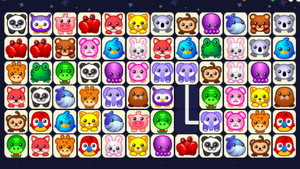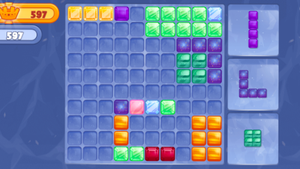Make full rows by dragging pieces made of hexagons onto the board.
Interactive gaming has emerged as a powerful medium for teaching life skills, transcending the traditional boundaries of education by providing a dynamic platform for experiential learning. These games simulate real-life scenarios, allowing players to practice decision-making, problem-solving, and critical thinking in a controlled environment. For instance, a game designed to teach financial literacy might involve managing a budget or investing in the stock market, giving players a sense of the consequences of their financial decisions without real-world risks. This hands-on approach to learning life skills ensures that players are not just passive recipients of information but active participants in the learning process.
Moreover, interactive games often incorporate elements of collaboration and social interaction, which are crucial in developing interpersonal skills. Through multiplayer experiences, individuals can learn about teamwork, communication, and empathy by working together to achieve common goals within the game. These social dynamics mirror the complexities of real-life relationships and teamwork, providing a safe space for players to experiment with different ways of interacting. The immersive nature of such games can also lead to increased motivation and engagement, making the learning of life skills more enjoyable and impactful. As these games continue to evolve, they hold the potential to become a staple in not just educational institutions but also in homes and community centers as a means to equip individuals with essential life skills.
The psychology behind engagement and learning in games is a fascinating study of human behavior and motivation. At its core, the engagement in educational games is driven by the intrinsic rewards that the game environment provides. The principles of operant conditioning come into play, where positive reinforcements, like points, levels, or virtual rewards, encourage continued participation and effort. This gamified reward system taps into the brain's pleasure circuits, releasing dopamine, which not only makes the activity enjoyable but also enhances the retention of information. The challenge and satisfaction cycle found in games is crucial; as players overcome obstacles or reach new levels, they experience a sense of achievement that fuels their desire to continue learning.
Furthermore, the aspect of immediate feedback in games is pivotal for learning. It allows players to quickly recognize and correct mistakes, fostering a growth mindset where failure is not a setback but part of the learning curve. This immediate response to actions ensures that players are constantly aware of their progress, adjusting their strategies in real-time, which is a powerful tool for learning and improvement. Additionally, the narrative and storytelling elements of games can create emotional connections to the content, making the learning experience more memorable. The psychological underpinnings of gaming create a rich, immersive learning environment that can keep individuals engaged for longer periods, making educational games an effective conduit for teaching complex concepts and skills.

Connect the matching tiles and pop them all.

Complete a row or column by dragging blocks on the grid.

Swap the jewels to match 3 or more of the same colored jewel.

Match at least 3 candy bubbles of the same type to pop them.